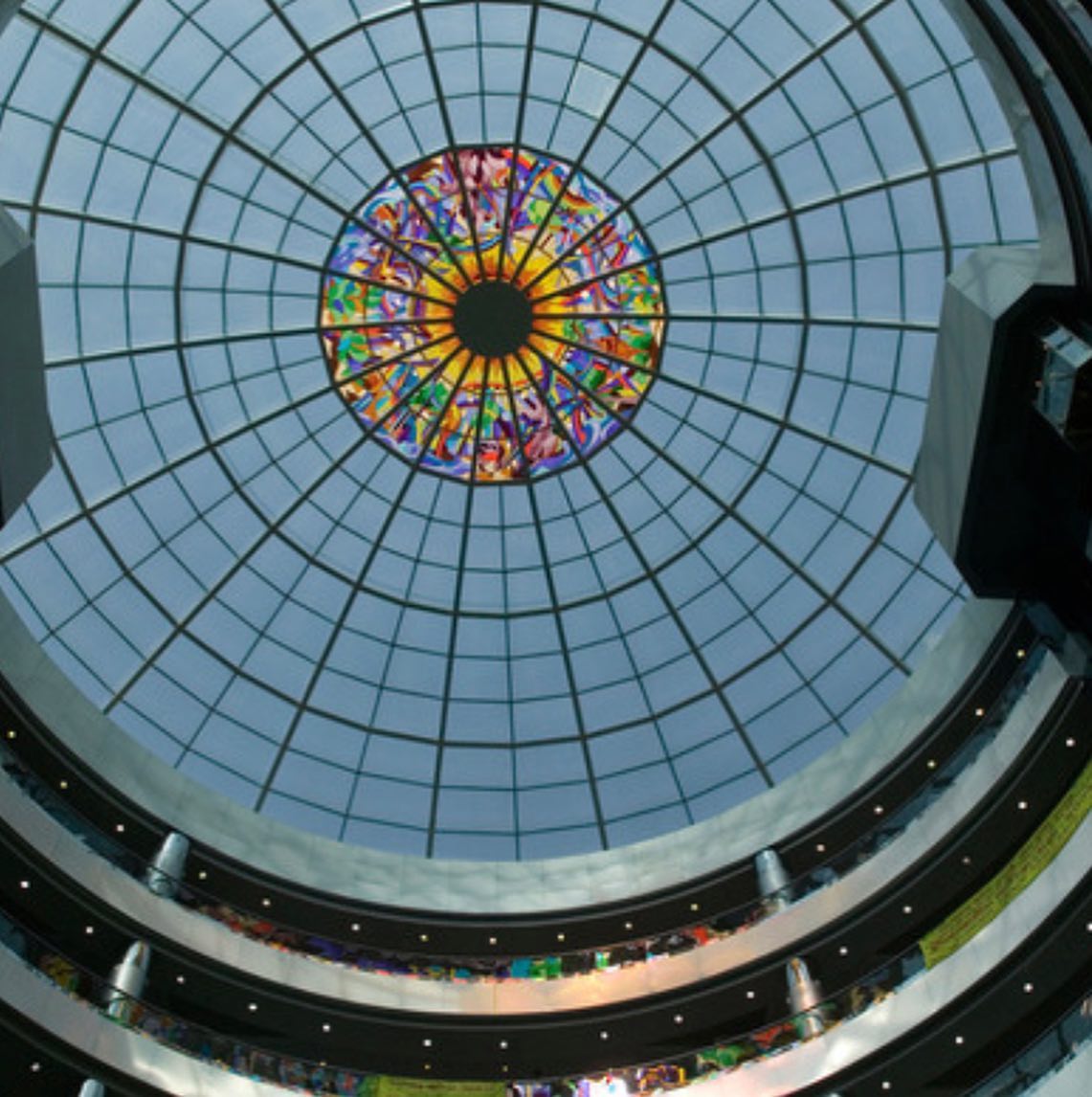Introduction to Facade Architecture:
Facade architecture represents the harmonious fusion of aesthetics and utility, seamlessly blending visual allure with pragmatic functionality to craft enduring and purposeful built landscapes. Its significance in urban development cannot be overstated, as it molds the character of cityscapes and enriches the architectural legacy of communities.
Functioning as the intermediary between internal spaces and the external environment, the facade assumes a pivotal role in defining a building’s outward appearance and its interaction with its surroundings. Yet, beyond its superficial role, the facade embodies a multifaceted significance within architectural discourse.
Throughout history, facades have transcended mere ornamentation to convey the essence of a structure, symbolizing its societal status, intended function, and stylistic ethos. They serve as poignant reflections of the prevailing cultural, social, and technological milieu, encapsulating the spirit of their era in their design and execution.
The Importance of Facade Design in Contemporary Buildings
In contemporary architecture, facade design stands as a cornerstone of innovation and sustainability, profoundly influencing the functionality, efficiency, and aesthetic appeal of modern buildings. Beyond mere visual allure, the facade plays a pivotal role in addressing pressing environmental concerns, enhancing occupant comfort, and fostering sustainable practices.
At the forefront of contemporary design, facades are meticulously crafted to respond to the dynamic needs of urban environments. They serve as active interfaces, regulating solar heat gain, maximizing natural light penetration, and optimizing energy performance through advanced material selection and integrated technologies.
Moreover, in an era characterized by rapid urbanization and dwindling resources, facade design emerges as a catalyst for sustainable development. Buildings are increasingly conceptualized with passive design strategies, harnessing natural elements to reduce energy consumption and mitigate environmental impact. From green roofs to photovoltaic arrays, facades serve as canvases for innovation, seamlessly integrating sustainable features into the architectural fabric.
Furthermore, in the realm of smart buildings, facades are imbued with intelligence, incorporating responsive systems that adapt to changing environmental conditions and user preferences. From dynamic shading systems to interactive facades, contemporary designs prioritize flexibility and user-centricity, enhancing occupant well-being and productivity.
Evolution of Dome Glass Designs
The evolution of dome glass designs represents a captivating journey through architectural ingenuity, technological advancement, and aesthetic innovation. From ancient marvels to modern wonders, the evolution of dome glass designs is a testament to humanity’s quest for beauty, functionality, and engineering prowess.
Ancient Origins:
Dome structures have a rich history dating back millennia, with early civilizations such as the Romans and Byzantines showcasing remarkable feats of dome construction in structures like the Pantheon and Hagia Sophia. While these early domes were typically constructed of stone or brick, small circular glass panes called “oculi” were sometimes incorporated to introduce natural light.
Medieval Revival:
During the medieval period, the knowledge of glassmaking and structural engineering progressed, leading to the revival of dome designs in grand cathedrals and religious buildings across Europe. Intricately crafted stained glass windows adorned these domes, transforming them into celestial displays of light and color, such as the Sainte-Chapelle in Paris and the Duomo di Santa Maria del Fiore in Florence.
Industrial Revolution:
The Industrial Revolution ushered in a new era of technological innovation, providing architects and engineers with the tools to push the boundaries of dome glass design. Advancements in glass production, such as the development of float glass techniques in the late 19th century, enabled the creation of larger and more intricate glass panels.
Modern Marvels:
In the 20th and 21st centuries, dome glass designs have reached new heights of complexity and sophistication. Innovations in structural engineering, such as the use of lightweight materials and computer-aided design software, have enabled the construction of monumental glass domes that defy gravity and imagination.
Contemporary dome glass structures, like the Reichstag Dome in Berlin and the Louvre Pyramid in Paris, serve as iconic symbols of modern architecture, seamlessly blending form and function. These structures harness natural light to create awe-inspiring interior spaces while showcasing the beauty and versatility of glass as a building material.
Looking ahead, the evolution of dome glass designs continues to unfold, driven by advancements in sustainable architecture, digital fabrication, and biomimicry. As architects and designers continue to push the boundaries of innovation, the future promises even more daring and visionary dome glass structures that captivate the imagination and inspire wonder.
Different Styles and Types of Dome Glass Structures
Dome glass structures come in various styles and types, each serving different purposes and exhibiting unique architectural features. Here are several examples:
- Geodesic Domes: Geodesic domes are constructed using a network of interconnected geometric shapes, typically triangles. This design offers great strength and stability while minimizing the amount of material needed. Geodesic domes are used for various purposes such as greenhouses, event spaces, and even residential homes.
- Monolithic Domes: Monolithic domes are made from a single continuous material, usually concrete. They are known for their durability, energy efficiency, and ability to withstand extreme weather conditions. Monolithic domes are often used for schools, churches, storage facilities, and even houses.
- Spherical Domes: Spherical domes are perfectly round structures that offer a visually striking appearance. They can be made from various materials such as glass, metal, or concrete. Spherical domes are commonly used for planetariums, observatories, and exhibition spaces.
- Tensile Fabric Domes: Tensile fabric domes use a lightweight membrane stretched over a structural framework to create a large enclosed space. This design allows for flexibility in shape and size and provides natural daylighting. Tensile fabric domes are popular for sports facilities, exhibition halls, and temporary event structures.
- Buckminster Fuller Domes: Also known as Buckyballs or Fullerene domes, these structures are based on the designs of architect Buckminster Fuller. They are composed of a series of interconnected polygons, forming a spherical shape. Fuller domes are often used for artistic installations, recreational spaces, and architectural experiments.
- Inflatable Domes: Inflatable domes are lightweight structures that can be quickly inflated and deflated using air or gas. They are portable and easy to set up, making them ideal for temporary shelters, event tents, and recreational enclosures.
- Transparent Glass Domes: Transparent glass domes utilize glass panels to create a visually stunning enclosure that allows natural light to penetrate. These domes are often used for botanical gardens, atriums, and public spaces where transparency and aesthetics are important.
- Modular Domes: Modular domes are constructed using prefabricated components that can be easily assembled and disassembled. This design offers flexibility in size and configuration and is suitable for various applications such as emergency shelters, housing, and commercial buildings.
Each style and type of dome glass structure offers its own set of advantages and can be tailored to meet specific architectural and functional requirements.
The Use of Dome Glass in Residential Buildings
Dome glass in residential buildings can offer a unique architectural feature with several benefits:
- Aesthetics: Dome glass adds a modern and aesthetically pleasing element to residential architecture. It can create a sense of openness, allowing natural light to flood into the interior spaces and providing panoramic views of the surroundings.
- Natural Light: One of the significant advantages of dome glass is its ability to maximize natural light penetration. This can reduce the need for artificial lighting during the day, leading to energy savings and a more pleasant living environment.
- Energy Efficiency: Properly designed dome glass structures can contribute to energy efficiency by harnessing passive solar heating. The curved shape of the dome can help to trap and distribute solar heat evenly throughout the space, reducing the need for heating in colder climates.
- Ventilation: Dome glass structures can be designed to incorporate ventilation systems that promote airflow and regulate indoor temperature. This natural ventilation can enhance comfort levels and reduce reliance on mechanical HVAC systems, further improving energy efficiency.
- Durability: Modern dome glass materials are often engineered to be durable and resilient against environmental factors such as wind, rain, and temperature fluctuations. This durability can contribute to the longevity of the building and reduce maintenance costs over time.
- Design Flexibility: Dome glass structures offer architects and homeowners a high degree of design flexibility. They can be customized to fit various architectural styles and can serve as focal points or signature elements of a residential building.
- Sound Insulation: Depending on the design and materials used, dome glass structures can provide effective sound insulation, reducing noise pollution from the external environment and improving acoustic comfort indoors.
- Sustainability: By maximizing natural light and reducing energy consumption, dome glass structures can contribute to sustainable building practices and help homeowners reduce their carbon footprint.
However, it’s essential to consider potential drawbacks such as cost, maintenance requirements, and potential issues with glare and solar heat gain in warmer climates. Additionally, proper insulation and shading solutions may be necessary to mitigate heat loss/gain and glare issues associated with dome glass structures.
The Use of Dome Glass in Commercial Buildings
Dome glass, often referred to as dome skylights or simply skylights, serves various purposes in commercial buildings. Here are some of the primary uses:
- Natural Lighting: Dome glass allows natural light to penetrate into the building interior, reducing the reliance on artificial lighting during daylight hours. This can lead to energy savings and create a more pleasant and productive indoor environment for occupants.
- Aesthetic Appeal: Dome glass adds architectural interest to commercial buildings by introducing unique shapes and patterns to the roofline. They can enhance the overall design aesthetic, making the building more visually appealing both inside and out.
- Open Feeling: The use of dome glass can create a sense of openness and spaciousness within the building, particularly in areas like atriums or lobbies. This can contribute to a welcoming atmosphere for visitors and employees alike.
- Ventilation: Some dome glass structures are designed to be operable, allowing for natural ventilation. This can help regulate indoor temperature and improve air quality, reducing the need for mechanical ventilation systems.
- Connection to the Outdoors: Dome glass provides views of the sky and surrounding environment, helping occupants feel connected to the outdoors even when they are inside. This can have psychological benefits, promoting a sense of well-being and connection to nature.
- Solar Gain: Depending on the design and orientation of the dome glass, it can also contribute to passive solar heating by allowing sunlight to enter and warm the interior space, particularly during colder months.
- Marketing and Branding: For commercial buildings that want to showcase sustainability or modern design principles, dome glass can be a key feature that sets them apart from competitors. It can become a signature element of the building’s identity and brand.
Conclusion:
Overall, the use of dome glass in commercial buildings offers a range of benefits, from energy efficiency and aesthetics to indoor comfort and brand differentiation. However, it’s essential to consider factors such as location, climate, building function, and maintenance requirements when incorporating dome glass into the design. Exploring the captivating world of dome glass designs within the facade architecture of Dtech Corporation reveals a fusion of innovation, functionality, and aesthetic allure. These intricate designs not only serve as visually striking elements but also demonstrate Dtech’s commitment to pushing the boundaries of architectural possibilities. From the seamless integration of technology to the harmonious blending of form and function, each dome glass design tells a unique story of ingenuity and creativity. As we marvel at the beauty of these structures, we are reminded of the endless possibilities that lie ahead in the realm of architectural design. With Dtech Corporation leading the way, the future of facade architecture promises to be as breathtaking as it is groundbreaking.


Leave a Reply